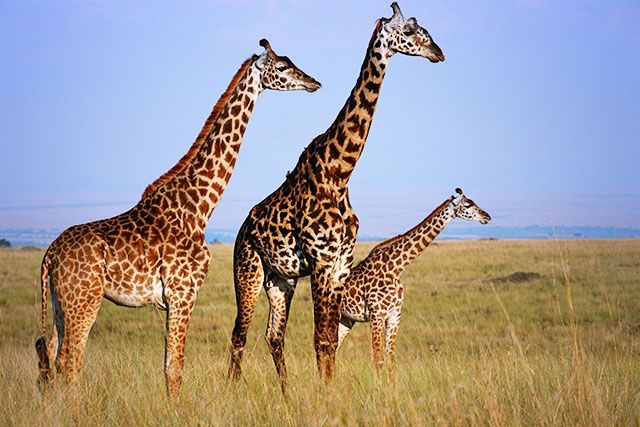DEVASTATION: The world’s tallest mammals are now characterized as a “vulnerable” species.
By Natalie Apostol, Editor
For several years, giraffes roamed the savannahs in Africa and have become a child’s favorite animal at the zoo. However, giraffes and many other wild species consequently face mass extinction due to agricultural expansion, and their population size has significantly decreased over the past decade. According to the International Union for the Conservation of Nature (IUCN) Red List, the population decreased 40 percent over the course of 30 years. The Red List categorizes threatened animals into nine distinct levels ranging from “least concern” to “extinct.” In three decades, giraffes rose from “least concern” to “vulnerable,” only two levels away from complete extinction.
Several factors such as poaching, deforestation and pollution contribute to their decline in population. Because large numbers of wild animals are hunted and the wild areas are converted for farming, wildlife is continually at risk for extinction. Many endangered species live in forests which provide natural resources such as oxygen and freshwater. Deforestation poses threats as it cuts off these natural supplies and contributes to pollution. Other measures, such as unsustainable logging, use heavy machinery to cut down forests, making it difficult for them to carry out their ecological functions; as a result, wildlife habitats become fragmented.
Jani Actman of the National Geographic reported that poachers often shoot giraffes for their meat and tails, especially in the Democratic Republic of Congo. “If the number slips in half, then we’re in a real dire situation […] Every single giraffe is valuable,” Actman said.
Complete extinction of the giraffe population will negatively impact many imperative crops because they play a key role in maintaining food supply. Giraffes provide genetic material used to produce several variations of a crop— such as mangoes. “Wild relatives of important food crops, such as mangoes and sunflowers, are now in danger of extinction, cutting the ability to safeguard food supplies by breeding new varieties resilient to drought and disease,” Damian Carrington of The Guardian newspaper said.
If the trend continues among wild areas, giraffes will become entirely extinct. The IUCN Conservation Congress put its emphasis and efforts on resolving the issue by collaborating with the Okapi Conservation Project and the Institute of Congo for the Conservation of Nature (ICCN). The ICCN states that their “imperative is to protect the country’s flora and fauna. ICCN wardens, rangers and guards a share of wide range of protection and law-enforcement responsibilities.” The ICCN plans to take action by monitoring poachers, collecting snares and getting the community involved. By supporting the Okapi Conservation Project, giraffes and other wildlife will eventually be conserved.
A solution to the growing problem is to spread awareness at local and large levels. “I think the best way to solve the issue is to make others aware of poaching and hunting laws. If the public becomes more aware of this, many people will make more efforts to conserve wildlife,” Marguerita Carlisle (12) said. Education is ultimately key to saving the giraffe population and reducing the threat of extinction.

